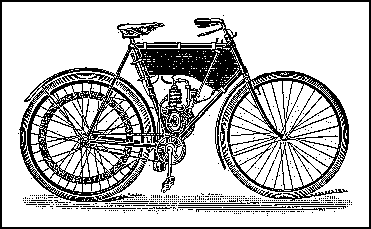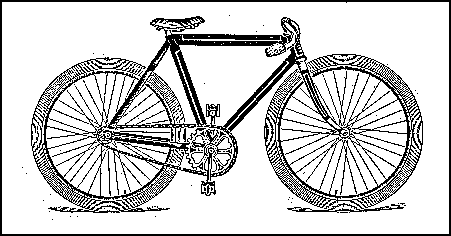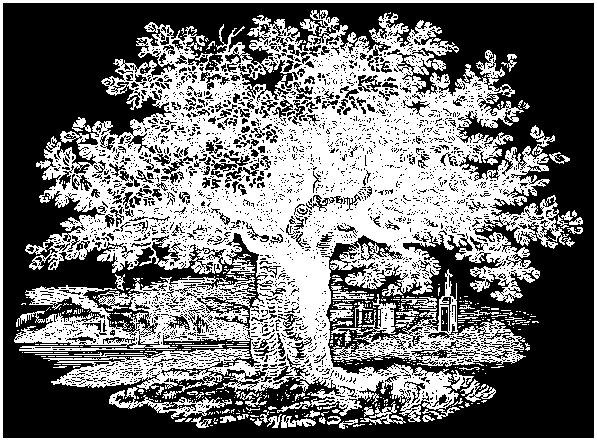Allen Noren
(Traveler's Tales/
Publishers Group West)
 Allen Noren and his girlfriend, Suzanne, set out to ride around the Baltic Sea on a motorcycle.† The route had just been opened: Germany, Denmark, Sweden to the Arctic Circle, then down through Finland, Russia, Estonia, Latvia, Lithuania and Poland. It includes some of the most hammered parts of the former Soviet Union. Going there was asking for it, but that's what adventurers do.
Allen Noren and his girlfriend, Suzanne, set out to ride around the Baltic Sea on a motorcycle.† The route had just been opened: Germany, Denmark, Sweden to the Arctic Circle, then down through Finland, Russia, Estonia, Latvia, Lithuania and Poland. It includes some of the most hammered parts of the former Soviet Union. Going there was asking for it, but that's what adventurers do. These nomads are somewhere between religious and obsessive. Like the penitential religious, suffering enhances the reward; like obsession, other needs become subservient. This book chronicles what happens when this heady mixture of ecstasy and compulsion runs into a three-month rainstorm.
If you travel at all, you will meet people who live to work a while, then travel until they run out of money. Occasionally there is a lucky one who admits to an inheritance. They are thin, rough-looking, talkative. They open up to a stranger in a minute, and stay awake all night telling stories. They can sleep anywhere, anytime. They have the confidence of those who have tested themselves and passed the test. They have walked on water. Listen to our author:
Traveling has everything to do with faith. I felt I'd been called to every place I went, and I hardly questioned that calling. There was faith in the listening, in the patience of planning, in the saving and the sacrifices to save more, in the packing up and leaving. There was a faith in knowing there couldn't be a wrong turn or a bad trip because if you listened, you'd always be right where you needed to be. And with that faith came the rewards of travel: the experiences and insights, the connections and friends, the limitless peace of mind that I rarely felt at any other time.
But if everything you do is right, what about your partner? Is everything she does right, too? Turns out that the dance required to achieve this balance is rarely a pas de deux.
Allen and Suzanne had been together for years, through other strenuous journeys. Youth, energy and common goals made their lives exciting, out of the ordinary. The first showers they encountered on this trip seemed to wash everything clean: bright beginnings. What followed was rain: misting, drizzling, pelting, dripping down the neck. Rain mixed with road crud, and splashed back in the face. Rain in the morning, rain in the afternoon. Rain all night long. Rain that soaked through clothing, skin, soul. Rain that made Allen shrink and grow tougher, like rawhide, but just plain washed Suzanne away. She couldn't understand the heroic in self-inflicted discomfort. She was not uplifted by it, didn't experience "that limitless peace of mind" so vital to her partner. She was a wet blanket. She rained on his parade.
Storm is the story of water eroding rock. It questions whether perseverance is a part of courage, or is just plain stubbornness. It explores the elemental tension between the desire for a mate and the desire for freedom. Merle Haggard said it in one line: "He who travels fastest, goes alone."
Do you want to ride along on this doomed trip? Noren tells a good story, moving us along at 85 mph on the Autobahn, 5 mph on cobbled old-world streets. He is observant, gregarious, passionate --- and he shows us a low-down, but still positive view of poor, battered Eastern Europe.
Wanderlust is a common vice on this crowded planet and travel literature feeds and inflames that lust. So much so that Travelers' Tales, the San Francisco publisher of this good-looking hardback, can show over 50 other titles on their list. They put out books written by people you've never heard of, the one book that is supposed to be inside each of us, often born after a spectacular trip. This is one of these books.

Of Life
Hugh Nissenson
(Paul Dry Books)
 Thomas Keene has moved to Ohio from New England. He keeps a diary telling of his new world on the frontier. The diary is probably not unlike one that you and I would keep in such circumstances. Records of items bought (steel pens, India ink), items sold (cheese, corn, whisky --- he runs his own still). Day-to-day meetings with friends, neighbors and the militia who come into the area when the Indian raids begin.
Thomas Keene has moved to Ohio from New England. He keeps a diary telling of his new world on the frontier. The diary is probably not unlike one that you and I would keep in such circumstances. Records of items bought (steel pens, India ink), items sold (cheese, corn, whisky --- he runs his own still). Day-to-day meetings with friends, neighbors and the militia who come into the area when the Indian raids begin.There are a few memories of his first wife, who died of "the bloody flux." There is the courting of his second, Franny, who lives nearby. There are notations from sermons, and a story of meetings with a man by the name of John Chapman, later to be remembered as Johnny Appleseed.
There are dirty jokes, descriptions of Indian tortures and fantasies of sexual experiences, which usually include the phrase Masturbatus sum.
There are tiny details of how much whisky is sold to whom, how much cash accumulated (reaching at one point $44.20), size and quantity of bowel movements, number of times drunk, and number of days since the last drink. Too, there are entries concerning the War of 1812, notations about Presidents Jefferson and Madison, English actions in Canada, details of raids by the Indians. Quotes from the Bible are common, as are discussions of the Scandinavian mystic Swedenborg.
While Keene is wooing his second wife-to-be, he is involved in furtive trysts, along with a bit of slavery- Sometimes the writing is tedious, as life on the frontier was tedious, sometimes it is understated, as most of the people were expected to be, sometimes funny, or appalling, The Injuns dug a pit deep enough for Jethro Stone to stand upright. Then they put him into it, hands tied behind his back, and rammed earth all round his naked body, up to his neck. His head was above ground. Immediately the new moon rose --- about 7:30 --- Tommy Lyons [an Indian] scalped him and there let him remain for three hours...Stone screamed, "Shoot me! Shoot me! Shoot me!" while they danced around him. Then Tommy Lyons made a small fire behind Stone's head and kept it burning two hours till Stone's eyes gushed from their sockets and he died. There's something to be said for the diary form. In the hands of a naïf like Ann Frank, where we know the terrible outcome ahead of time, it can create an unbearable tension. But a fiction/diary becomes more tricky. In the hands of an artist like Doestoevski or Georges Bernanos, it can sweep us up --- its days become our days. However, with Nissensen, it doesn't quite come off. The intermixing of lurid deaths and fantasies --- of, for example, being beaten by eunuchs --- doesn't necessarily mix easily with pedestrian quotes from the bible, listings of monies spent cracking corn and made selling "80 proof," and the size and quantity of stools. The diary form is a scattered form: the days events are always interrupted by sleep (or war), and the narrative sweep and build-up must be truncated, as in real life, by diversions. With his thorough knowledge of frontier life, Nissenson, if he used the more standard novelistic form, could have involved the reader deeply in his story. Instead, we feel as if we are in the midst of a series of chopped-up events whose power is diffused by the introduction of yet another date, another list of items bought and sold.
